Back
May. 24 2022 Maintenance By East Bay Motorsports
Your ATV shock absorbers are under immense pressure, constantly taking the heat while you go crashing around in the wilderness. All that hard work will cause the shocks to inevitably wear down over time, and they will eventually need to be rebuilt or replaced. But how can you tell when the time has come? This guide from East Bay Motorsports will help you evaluate your ATV shock absorbers, and determine whether a replacement is needed.
Feel free to contact us if you need any further assistance! East Bay Motorsports is your destination for ATV repair in Hayward, CA. We welcome customers from all over the Bay Area.
When you inspect the overall condition of your ATV, remember to include your shock absorbers. Watch out for these important visual clues that could indicate a problem with your shocks:
Your shock absorbers don’t just provide you with a smooth ride – they also support every component of your ATV. Replacing bad shocks right away will prevent them from wreaking havoc on the overall condition of your vehicle.
Visual inspections are important, but you will not necessarily be able to tell when your shocks have gone bad just by looking at them. Because shocks deteriorate gradually, it can be hard to notice when they begin to affect performance. You will need to pay close attention when riding your quad to detect any changes. If you have another ATV with fresh shocks at your disposal, you can do a comparison test.
Because shocks deteriorate gradually, it can be hard to notice when they begin to affect performance. You will need to pay close attention when riding your quad to detect any changes. If you have another ATV with fresh shocks at your disposal, you can do a comparison test.
You can tell your ATV has bad shocks when you experience excessive turbulence on rough terrain. If you feel jolted with every minor impact, you will need to replace the shocks. Slow braking is another indication. Try riding your ATV on level ground, and hit the brakes. If you feel the vehicle tip forward right before coming to a stop, your front shocks are probably to blame. Faulty rear shocks will cause the chassis to fall backward when you accelerate in reverse. If your ATV has bad shocks on one side, the chassis will roll toward one side when you go around turns. Shaky handlebars can also result from bad shocks, but in this case, you should also check the wheel alignment and tire pressure to rule out other problems.
If and when your shocks need replacement, you can find all the parts and services you need right here at East Bay Motorsports. Our dealership is located in Hayward, CA.
See All Posts
Buying a used ATV or UTV can be a stressful endeavor. The last thing you want to do is spend a bunch of money buying someone else’s problem, or buying a stolen ATV. To help you with this endeavor, we have compiled what we think is the most helpful guide available. We also compiled a super helpful checklist you can take with you when you are looking at an atv. Download your free used atv checklist!
The last thing you want to do is spend a bunch of money buying someone else’s problem, or buying a stolen ATV. To help you with this endeavor, we have compiled what we think is the most helpful guide available. We also compiled a super helpful checklist you can take with you when you are looking at an atv. Download your free used atv checklist!
When buying a used ATV, you need to check the body of the ATV, check the engine and other internal components, make sure it is not stolen, learn the machine’s history, perform a useful test drive, and then negotiate the best deal.
The Quick Checklist
Doing a check on the body of the ATV is mostly just checking the obvious, but there are some things you may forget to check if you aren’t going through a checklist.
The plastic on an ATV is easy to inspect. Look for any cracks or other sign of damage that may show the ATV has been wrecked. Also, be sure to look out for any signs that they plastic has been replaced or repaired after a wreck.
Check the seatCheck the seat cover for cracks and tears. Your seat inspection should not be limited to just looking for the obvious cracks and such. You should also pull the seat off and feel it. It the seat is heavy and feels like it has been water-logged, there is a good chance this machine has been ridden through mud or water, or been left out in the rain. Any of those should cause you concern. If you are looking at a UTV, you can just push down on the seats and feel if they seemed waterlogged and see if you can hear water sloshing around.
Check the handlebarsMake sure the handlebars aren’t loose or bent. Bent handlebars are a pretty sure sign the ATV has been wrecked pretty hard. When you have the ATV jacked up, wriggle the handlebars and make sure they aren’t loose.
When you have the ATV jacked up, wriggle the handlebars and make sure they aren’t loose.
A new set of tires can cost nearly $500 so you will want to know if the ATV needs new tires. This is a great bargaining chip to knock the price down. Checking the tires can be about more than just the cost of the tires though. Cracked and damaged tires can be a sign that the ATV has been left out in the sun for long periods of time and that the owner hasn’t maintained the machine very well.
You will want to check the tires with a flashlight. Shine the flashlight around each treat block and both sidewalls to look for cracks or missing chunks. Riding on cracked tires can be dangerous, just like driving a car, so make sure the cost to replace those is accounted for. You should also be concerned if the front tires look new and the rear tires are bald as that is a sign that the owner may like to do smokey burnouts in the street.
Check the leversThere’s not much to this one. Just check all the levers, buttons and knobs to ensure they do what they are supposed to do.
Just check all the levers, buttons and knobs to ensure they do what they are supposed to do.
You should inspect the rims closely for any cracks or bends. You should also check the wheel studs or lugs at the same time. This is usually overlooked, but it is quite common for riders to break a lug off. A broken lug can be a dangerous condition as it can come off due to being torqued while riding and cause an accident.
Check the frameWhen you inspect the frame and chassis, you should be looking for any cracks, fractures, bends and old repair jobs. Any of the above will tell you the ATV has been in an accident at some point. Many frames today are made of aluminum which doesn’t rust, so finding cracks in a frame will require a close visual inspection. Aluminum is a light, silvery color, and a crack will show up as either dark silver or black lines at the base of the weld. The most obvious place to see signs of bent steel is around the shock towers, where the shocks attach to the frame.
You should also inspect all the joints in the frame to see if there are cracks in the pain or rust forming on the welds. Rust on the frame is usually a pretty sure sign that the ATV has been damaged. All external steel parts on an ATV are coated, painted or otherwise treated to prevent rust with the possible exception of brake disks and the chain. If you find rust there’s a good possibility that there’s damage.
After you have inspected all the top part, get the ATV elevated so you can search the underneath for any significant damage to the belly of the machine.
Finally, get the ATV on a level surface and look at it from the front and rear to determine if it is crooked or leaning at all to one side more than the other. This could be caused by a damaged frame or busted shocks. To confirm it is one of the two, check the air pressure in the tires and make sure the shocks are adjusted properly. If it is still leaning, you are looking at damage from a bad crash.
If you are looking at a UTV, you’ll want to check the roll cage for any damage from them flipping it. Check where the roll cage mounts to the chassis to makes sure the bolts are not broken and have no bends in them.
Check where the roll cage mounts to the chassis to makes sure the bolts are not broken and have no bends in them.
The bearing and ball joints are important to inspect as severely worn ATV bearings and ball joints can separate in use, leading to bad accidents and serious injury. Even before they reach this dangerous stage, worn bearings and ball joints lead to sloppy steering and less stability during turns.
To check the wheel bearings and ball joints, you will have to be able to jack up one side of the ATV at a time. As such, it is smart to always bring a jack with you when you are inspecting a potential purchase. Once the ATV is jacked up, grab the tire firmly and rock it in and out, spin the tire and twist, bend and shake the tire. Listen to and feel the tire closely as you doo this. Any rattling, knocking, grinding or looseness is a sign that you have worn wheel bearing and ball joints.
Ball joints and wheel bearing each run about $140 per side to replace, and if any of them are worn, the rest is not far behind.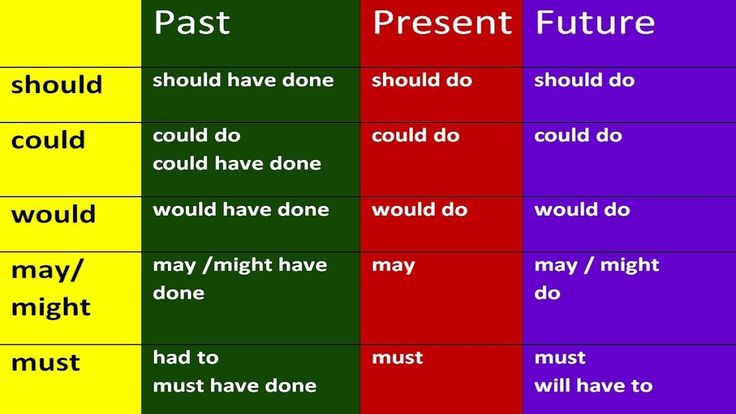 That means you need to calculate about $560 for the whole set if there is any wear. Use that as a negotiating point to drive the price down.
That means you need to calculate about $560 for the whole set if there is any wear. Use that as a negotiating point to drive the price down.
This one is pretty self explanatory. Check all the different lights on all settings and make sure there are no issues.
Check for modificationsSome modifications are great if they upgrade a stock part. Other modifications may look cool, but they can affect the way the ATV rides, including its power. Make sure you are happy with any modification, including how well they were installed. For example, an ATV may have been modified with a new exhaust, but if the carburetor or fuel-injection system weren’t properly modified to accommodate the added horsepower, this could cause the ATV’s engine to run hotter than normal until it burns up. Issues like this may be hard to spot so if you are concerned, maybe call a mechanic or ATV buddy.
Even worse than modification, if see parts on the ATV that are jerry rigged, or not how they should be, that should cause major concern. Not only does it point to problems with the ATV, it can tell you a lot about a seller’s maintenance of the ATV.
Not only does it point to problems with the ATV, it can tell you a lot about a seller’s maintenance of the ATV.
While the mileage on and ATV is less important than the maintenance, you should still check the odometer. First, check for any signs of tampering. While it isn’t likely, it would be a shame for you to overlook an odometer that has clearly been modified. In addition, just check what the mileage is at. If an ATV is well maintained, you should be confident if it has under 4,000 miles on it.
Check the winchYou will want to check that the winch works properly, but you shouldn’t stop there. Pull the winch out 15 feet or so and inspect the cable for signs of use. If the winch looks well used, there is a good chance this ATV has been ridden pretty hard in some rough terrain. In other words, the ATV has taken some damage. Beyond that, the condition of the winch’s cable can show signs of an ATV that hasn’t been stored properly if it is fraying or rusted.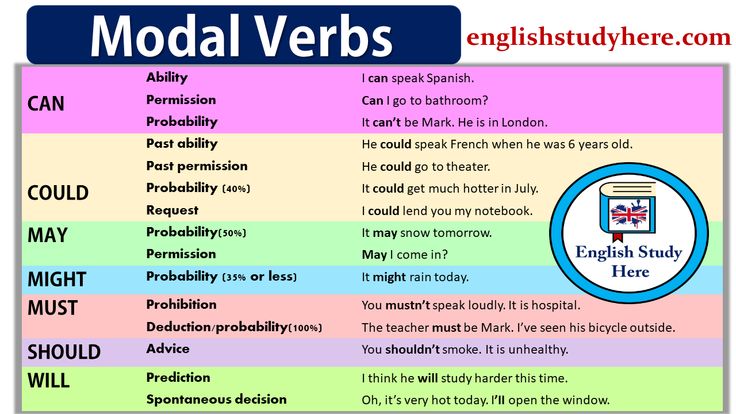
You will want to inspect the disc brakes to see how worn they are. Even if the pads look thick enough, the friction material may be cracked or delaminating from the backing plate. It is a good idea to jack up each side of the ATV and remove the wheel, caliper and pads to inspect the entire brake system.
A complete brake job costs about $200 so it’s good to know if you are going to need one. If there are noticeable grooves where the pads touch the discs, the ATV is going to need new brakes. Not only is this an expense you need to prepare for, it is an indication the ATV has been ridden pretty hard and there may be other things to be concerned about.
Check the brake padsBrake pads are thin to start with (about ¼ of an inch). So it is tough to inspect unless you get really close. Use an inspection mirror and a flashlight to get as good of a view as you can.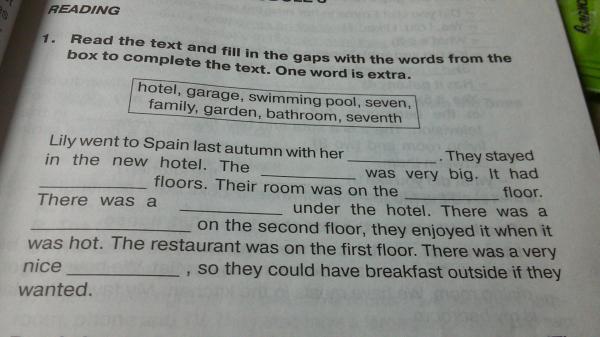 Recommendations usually allow the pads to get as low as 1/16 of an inch; however, since ATV rotors are so expensive (about $120 each), it’s never good to let them wear down that far and risk metal-to-metal contact. So, while thin pads may not be a sign of improper maintenance, it is a good bargaining point since you can expect to replace them if they are worn at all. If they look really thin, make sure you do a good inspection of the discs as well to see if they have caused damage. That is a deal breaker for me.
Recommendations usually allow the pads to get as low as 1/16 of an inch; however, since ATV rotors are so expensive (about $120 each), it’s never good to let them wear down that far and risk metal-to-metal contact. So, while thin pads may not be a sign of improper maintenance, it is a good bargaining point since you can expect to replace them if they are worn at all. If they look really thin, make sure you do a good inspection of the discs as well to see if they have caused damage. That is a deal breaker for me.
A brake caliper is one of many important parts of a braking system. Combined with brake pads, they have the enormous task of changing the vehicle’s forward motion to heat which stops the vehicle. If they don’t work properly, stopping the vehicle can be very difficult. The presence and location of brake calipers can vary depending on the make and model of ATV. If a caliper is present, it will always be found straddling a rotor, also known as a brake disc. Inspect each caliper for cracks or any signs of brake fluid leaks.
Inspect each caliper for cracks or any signs of brake fluid leaks.
There are a few things you want to check with the radiator. First, inspect the outside of the radiator and make sure there aren’t too many many dings or any real damage, especially any noticeable cracks. Because the radiator is subject to having debris thrown up from the trail, it isn’t a big deal to have little dings and dents, but major damage can be serious.
Second, inspect the cooling fins to see if any are bent. Third, check the radiator hoses for any leakage, cracks or bulges.
Finally, make sure the coolant is at the right levels, doesn’t appear to be leaking anywhere and is in good condition. When you are checking the coolant, make sure the engine is cool before removing a radiator cap as it can be under pressure and cause severe burns if the engine is hot. Having grabbed an radiator cap on a hot engine, I can tell you it is like grabbing a hot coal. I always have a small rag in all my vehicles to use when the engine is hot.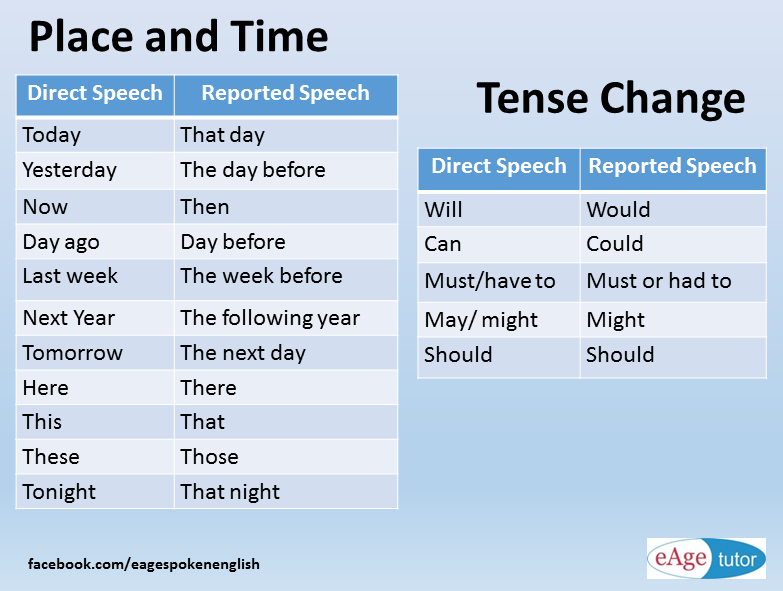 Coolant should be a consistent orange/pink or green color unless an aftermarket coolant has been added. An oily look or any particles in the coolant is a sign of potential problems. Coolant also acts as a lubricant so it is not good if someone has been using water in its place. If coolant has been replaced by tap water, there will most likely be corrosion inside the motor. It is also really important that the two different coolants have not been mixed, as they will form a sludge that will kill the cooling system, which is expensive to fix. It is wise to ask what kind of coolant they use in the ATV and ask if that is the same kind they have always used.
Coolant should be a consistent orange/pink or green color unless an aftermarket coolant has been added. An oily look or any particles in the coolant is a sign of potential problems. Coolant also acts as a lubricant so it is not good if someone has been using water in its place. If coolant has been replaced by tap water, there will most likely be corrosion inside the motor. It is also really important that the two different coolants have not been mixed, as they will form a sludge that will kill the cooling system, which is expensive to fix. It is wise to ask what kind of coolant they use in the ATV and ask if that is the same kind they have always used.
Worn shocks don’t dampen spring oscillations, which means your tires spend more time in the air after each bounce. That dramatically reduces the machine’s stability and makes it more dangerous to ride. Shocks run about $150 each to replace.
When you inspect the shocks, you want to look for any signs of leaks. Leakage is a sure sign of excess wear to the shocks. Look for moist areas around the top of the shock. If you see wet spots, run your finger over the area. If it’s oily, the shock is on its way out. Also, be sure to check the shock mounting points. If there is rust around the mounting points, then they have been overstressed. This is a pretty sure sign the machine has been driven hard, and may not be in the condition advertised.
Leakage is a sure sign of excess wear to the shocks. Look for moist areas around the top of the shock. If you see wet spots, run your finger over the area. If it’s oily, the shock is on its way out. Also, be sure to check the shock mounting points. If there is rust around the mounting points, then they have been overstressed. This is a pretty sure sign the machine has been driven hard, and may not be in the condition advertised.
The CV boots are are the boots that connect the axles to the wheel. The CV boots are on each axle, both against the differential gear box and on the outside near the wheel. There are eight total.
The CV boots keep the grease inside the rotating joint to ensure proper performance. When a CV boot wears down, it tears open between the pleats or at the band clamps. Once there is a tear, the boot flings the grease out of the joint and lets in water and sand that can destroy the joint. New boots run about $150 each installed. If you find sand or dirt in the joint, the joint is most likely damaged and must be replaced. New CV joints run about $250 each installed.
If you find sand or dirt in the joint, the joint is most likely damaged and must be replaced. New CV joints run about $250 each installed.
To inspect the CV boots and joints, remove the splash guards (if the ATV has them) and look for signs of grease on the inner and outer CV boot on each axle. Next, separate the pleats and check for small cracks or tears. Check the surrounding area for signs of grease that may have leaked from the clamps. Also look for any sand and dirt that has made its way through any cracks or tears.. The CV boots are fairly easy to maintain so if they are in bad shape, you probably want to walk away from the ATV as the rest of the machine is not likely to be in good condition.
Check the head gasketYou want to check the head gasket and valve cover for oil leaks. Oil leaks from the valve cover and head gaskets can cost $150 to $300 to repair, so you want to be aware if there is an issue before you buy. To check for an oil leak, wipe a clean rag around the head and valve cover gaskets. If the rag shows fresh oil, the gaskets need replacing.
If the rag shows fresh oil, the gaskets need replacing.
Changing the air filter is a regular and inexpensive part of maintenance for an ATV. Because of that, if you see large accumulations of dirt or debris in the filter, it is likely the owner has not maintained the ATV very well. The same is true if it appears the filter was not properly oiled. If there are signs of mice or other rodents hanging out in the airbox, just walk away from the deal, it isn’t worth it.
You should also remove the air filter and inspect the air intake area for water, dirt or other debris. If it has gotten into the air intake area, then it is probably in the motor, which is not a good thing.
Check the fluidsThere are lots of fluids you are going to want to check. Pull both the engine and transmission dipsticks to check the fluid level and appearance. The biggest issue is if you see any metallic particles in the oil. If you see that, run away, as that ATV has serious problems.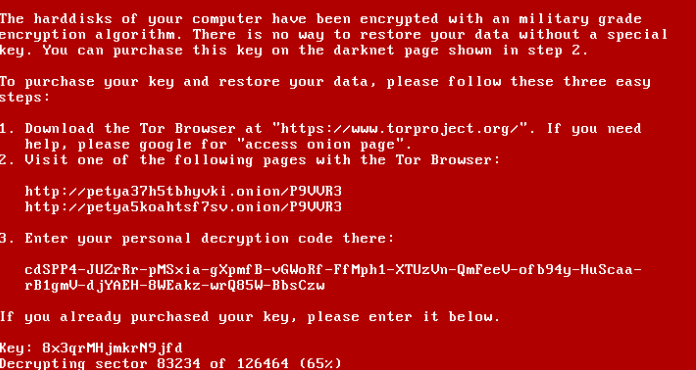 You also want to look for dirty engine oil. It may not be a deal breaker, but should be a concern depending how dirty it is. Check the motor oil for a burnt smell, lack of viscosity, contaminates or excessive darkness. If the oil is opaque black, instead of amber colored and translucent, it’s dirty. Or it might look milky if water has gotten into it. The oil is almost a double edged sword because brand new oil can be a concern as it may be covering up problems. You are going to have to go with your gut on this one.
You also want to look for dirty engine oil. It may not be a deal breaker, but should be a concern depending how dirty it is. Check the motor oil for a burnt smell, lack of viscosity, contaminates or excessive darkness. If the oil is opaque black, instead of amber colored and translucent, it’s dirty. Or it might look milky if water has gotten into it. The oil is almost a double edged sword because brand new oil can be a concern as it may be covering up problems. You are going to have to go with your gut on this one.
If the engine has an oil filter, search for it as well to see if it has been cleaned or changed recently. Ask the owner about the last time it was cleaned or changed as this is a good indicator of how well the ATV has been maintained.
While most people know to check the oil, you should also check the gas when inspecting an ATV. This is so easy to do that you shouldn’t skip it. Simply give the gas tank a quick sniff. If the gasoline smells rancid, then you will be looking at either carburetor overhauls or the same thing with the fuel injection system.
ATV and UTV axles take a beating and some wear is common, but can become an issued if the ATV has been abused excessively. The wear is vastly accellerated and becomes much more worrisome when the ATV or UTV has been lifted. Be very leery of lifted machines that have not had the stock axles replaced with extreme angle units made for lifted machines. The stock axle travels with the suspension and is designed to only drop out at stock travel length. When you lift a machine, the stock axle can no longer drop far enough during down travel and this results in premature wear. It also also puts tremendous stress on the bearings of the CV joint, which we discussed above. If you want to purchase a machine that has been lifted, ask if they had it professionally done, ask whether the axle was replaced and, if so with what, and then inspect the axle to confirm it is proper for the lift that was done. Call an ATV mechanic if you need additional help figuring this out.
This is a solid pro tip that not a lot of people do when checking out a used ATV, but it is super important because a bad compression can mean a blown engine. You will need to use a Compression Gauge to check the compression of an ATV.
Every ATV engine is a bit different, but generally you want to make sure both pistons are within 10% of each other and not below 100 PSI. That being said, it is best to look up the specific ATV you are inspecting to see what the compression should be.
Check the spark arrestorMake sure the Spark Arrestor is in the exhaust pipe. Most states and parks require you to have one and will turn you away if you don’t. Check out the requirement details on our full guide to riding on federal lands. A spark arrestor is pretty easy to spot. It is located at the end of your muffler. If you are lucky, the muffler will actually indicate in writing whether it includes an arrestor. If it says it does not, you should ask the owner if one is installed. You should also physically inspect for the spark arrestor to ensure it is in good condition. It basically looks like a little mesh screen, almost like a mini colander. If it is not easily visible, use a flashlight to look inside the muffler. If you are still having problems seeing it, use a small stick or screw driver to feel inside the muffler. If you still can’t find it, chances are there is no spark arrestor. Riding an ATV without a spark arrestor could subject you to a steep fine or, if you start a wildfire because of it, a whole lot worse.
You should also physically inspect for the spark arrestor to ensure it is in good condition. It basically looks like a little mesh screen, almost like a mini colander. If it is not easily visible, use a flashlight to look inside the muffler. If you are still having problems seeing it, use a small stick or screw driver to feel inside the muffler. If you still can’t find it, chances are there is no spark arrestor. Riding an ATV without a spark arrestor could subject you to a steep fine or, if you start a wildfire because of it, a whole lot worse.
There are a handful of cables that run through the ATV to different areas. Check all of them and make sure they are in good shape. Broken or cracked cables spell problems and should be avoided as a sign the ATV has been ridden too hard, left out in the weather or just not very well maintained.
Check the chainLook at the chain and sprockets for wear and rust. The teeth on the sprockets should not be worn, bent, or crooked. There should also not be any rust visible. It is worth asking the owner how often the chain and sprockets were lubricated as well so you can see if proper maintenance has been done.
There should also not be any rust visible. It is worth asking the owner how often the chain and sprockets were lubricated as well so you can see if proper maintenance has been done.
There’s not much to inspecting the motor mounts. Just make sure they are intact and secure. I have dealt with bad motor mounts before and they are a pain.
Test DriveCheck the StarterWhen you turn the key on and crank the engine over, it should burst immediately to life. If it takes its time starting, doesn’t start at all or the battery is completely dead, there is cause for concern. Sometimes it is worth bringing a battery with you so you can test if the problem is just a dead battery or something more serious. Another option is to bring a jumper box like this one. These boxes and easy to use. They are also a super useful part of your gear as they can be used in the future if you need to jump your ATV.
Listen for unusual tapping or other engine soundsListen to the engine while you are taking the ATV for a ride.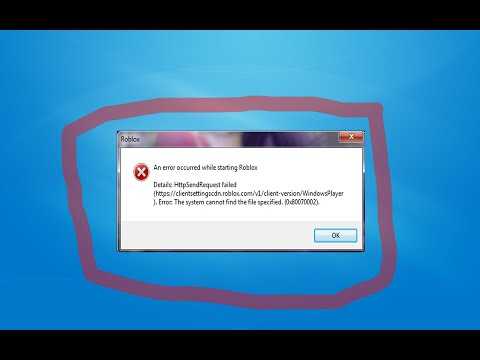 If it makes any loud, unusual tapping noises, that is a concern as it could mean the motor is well worn and requires a rebuild. This is going to be easier to identify by someone with experience riding ATVs, so you may want to bring someone with you that has the experience if you are a newer rider.
If it makes any loud, unusual tapping noises, that is a concern as it could mean the motor is well worn and requires a rebuild. This is going to be easier to identify by someone with experience riding ATVs, so you may want to bring someone with you that has the experience if you are a newer rider.
Sometimes, especially on older ATV’s, there might be some failures that only manifest in certain gears. Because of this, you want to make sure you test the ATV in every gear.
Make sure it is comfortableProbably most importantly, make sure you feel comfortable riding the ATV. No matter how tricked out the ATV is or how much power it has, you want to be comfortable riding it. A big part of this is making sure you get an ATV that is an appropriate size for you and your riding size. Never fear, we have a guide for that! Check out what size ATV you should get.
Check the ATV’s powerMake sure you can test drive in a good open area, not just in front of the seller’s house. You want to be able to really open it up and see how it runs. Make sure the ATV has no problem when you give it a lot of power. If it falters during this test, there could be an engine problem or the ATV may just not be as powerful as you are looking for.
You want to be able to really open it up and see how it runs. Make sure the ATV has no problem when you give it a lot of power. If it falters during this test, there could be an engine problem or the ATV may just not be as powerful as you are looking for.
Once the engine is up and running, you don’t want to see a lot of smoke coming from the exhaust. That’s always a bad sign there is something bad going on with the ATV likely to lead to costly repairs in your future.
Test for slippageOn your test ride of the ATV, if the CVT belt feels like it is slipping, that generally means you need a new belt, which isn’t terribly expensive; however, it could also be an indication of problems with the clutch. On an automatic transmission if the clutch feels like its slipping you will need to get your wallet out for that major repair.
Test for stabilityIf the ATV or UTV you are riding doesn’t feel nice and tight, that is a problem. You should feel like you have complete control over the ATV when you are driving it. If it is a bit wobbly, that could mean there is a serious issue in the suspension or steering.
You should feel like you have complete control over the ATV when you are driving it. If it is a bit wobbly, that could mean there is a serious issue in the suspension or steering.
Check how well all the brakes perform, including the parking brake. Brakes are not a huge expense to fix, but they are super important to ATV riding. Since you have already inspected the brakes, you should know if there is any kind of replacement needed. If the brakes looked fine, but they aren’t performing well, that is a cause for concern. We have an awesome guide to braking that you should check out to see what you should be able to do in an ATV and some more guidance on what you should be looking at with the brakes.
Check the alignmentWhile you are doing your test drive, if you feel the ATV pulling to either the left or the right, that might be an indication that the alignment is off.
Make sure the ATV isn’t StolenWe already published a whole guide to help you determine if you are looking at a stolen ATV, but here are some key reminders after you check out that article. You don’t want to buy a used ATV because, on top of it just not being cool to support a marketplace that rips off people’s property, it could lead to you losing both your money and the ATV if you are caught with it.
You don’t want to buy a used ATV because, on top of it just not being cool to support a marketplace that rips off people’s property, it could lead to you losing both your money and the ATV if you are caught with it.
First, you want to inspect both the VIN and engine or chassis number for any damage. Thieves will often scratch these numbers off so the ATV can’t be traced. If either is scratched off, walk away from the deal, and consider calling the police to let them know someone is selling a stolen ATV.
If there is a good VIN, run it through the NICB’s database. NICB offers a free service to the public to assist in determining if an ATV, or any other vehicle, has been stolen, but not recovered. You can also determine if an ATV has been reported as a salvage vehicle by a participating NICB insurance company. This is important because a salvaged ATV, in addition to potentially having unknown damage, can never be registered for highway use in most states. To use the NCIB’s “VINCheck” you simply have to enter the VIN number and you will get the results. Be aware, you are limited to five VIN checks per day. There are a handful of other places that are worth running the VIN discussed in our article, but the NICB is the most important in my mind.
Be aware, you are limited to five VIN checks per day. There are a handful of other places that are worth running the VIN discussed in our article, but the NICB is the most important in my mind.
Because not all stolen ATVs are reported to NCIB like they should be, it is worth calling your local police department to see if a similar ATV has been reported stolen. The great thing about going through your police department is they will hopefully be aware of any reports that have come in from the area, even if they didn’t include a VIN.
Don’t be surprised; however, if your local agency isn’t as accommodating. While some will take your call and give you a quick answer, others won’t help you unless you actually bring the vehicle into the department so they can inspect it. Of course, if it comes up stolen, they impound it. This will make it difficult, but if a seller is cooperative and willing to take it down to the station, that should ease most of your fears.
Even if the VIN checks out, you should be aware of VIN fraud. VIN cloning is the most common method of VIN fraud. It involves taking a VIN from a similar, legally registered vehicle and placing it on a stolen vehicle to hide its identity. The key to identifying VIN fraud is knowing that each number in the VIN actually has a meaning such as the manufacturer, the year of the ATV and so forth. We have a guide to all the numbers published, so check that out when you are inspecting the ATV’s VIN.
VIN cloning is the most common method of VIN fraud. It involves taking a VIN from a similar, legally registered vehicle and placing it on a stolen vehicle to hide its identity. The key to identifying VIN fraud is knowing that each number in the VIN actually has a meaning such as the manufacturer, the year of the ATV and so forth. We have a guide to all the numbers published, so check that out when you are inspecting the ATV’s VIN.
Finally, you want to get a title for any ATV you buy, unless you are unfortunate enough to live in a state where no title is required. We have published a pretty thorough guide to the ATV laws in every state, including whether a title is required, so check that out to see if you happen to live in a state where you would not expect a seller to give you a title. If you don’t live in one of those states, don’t buy an ATV without a title.
OtherThere are a handful of other useful tips I have that I couldn’t figure out where to put, so I am just randomly throwing them out here.
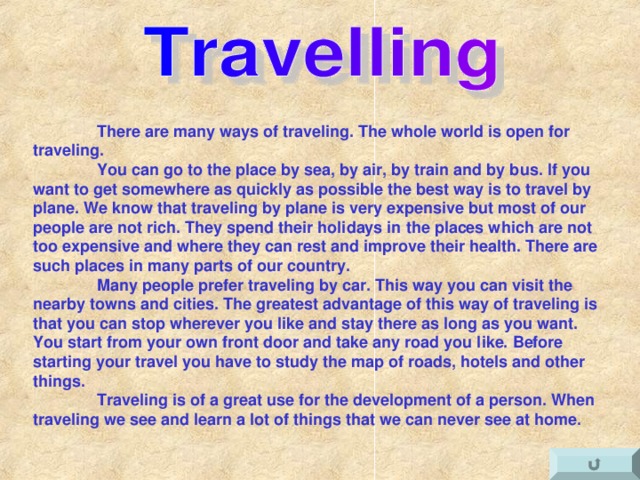
 If he or she uses the winch a lot, that means they get stuck a lot, which means the ATV is going to be well worn.
If he or she uses the winch a lot, that means they get stuck a lot, which means the ATV is going to be well worn.Once you are comfortable with the ATV you want to buy, the only thing left to do is get the best deal you possibly can. Check out our guide for how to buy a used ATV on the cheap for our top tips. Probably the most important thing is to have done your research to know how much the ATV is actually worth, and then use all you found during your inspection to drive that price lower. Be sure to check out the whole article though, as there are lots of great tips to surely help. Also, check out our recommended gear for all the things you will want to get with your new ATV!
Suspension. Shock absorbers must be free of oil, and CV boots must be free of holes through which moisture can enter. To check the condition of the wheel bearings and hub bushings, you need to raise the ATV with a jack and shake the wheels vertically and horizontally - if there is play, one of these parts is worn out. Most often these are bearings. You also need to check all the suspension arms for play - perhaps ball bearings or silent blocks need to be replaced. nine0003
Shock absorbers must be free of oil, and CV boots must be free of holes through which moisture can enter. To check the condition of the wheel bearings and hub bushings, you need to raise the ATV with a jack and shake the wheels vertically and horizontally - if there is play, one of these parts is worn out. Most often these are bearings. You also need to check all the suspension arms for play - perhaps ball bearings or silent blocks need to be replaced. nine0003
ATV with working shock absorbers lowers and rises evenly - when pressing on the rear or front, one of the sides should not sag.
Transmission. Gearboxes must be free of oil leaks and cracks. The oil in them can be checked by lowering a plastic clamp into the filler neck or unscrewing the drain bolts: it’s bad if the liquid is opaque, it contains chips or other foreign particles. To check the modes of operation of the transmission, you need to jack up the front of the ATV. When all-wheel drive is on, when turning the left wheel, the right wheel should rotate in the opposite direction, and vice versa.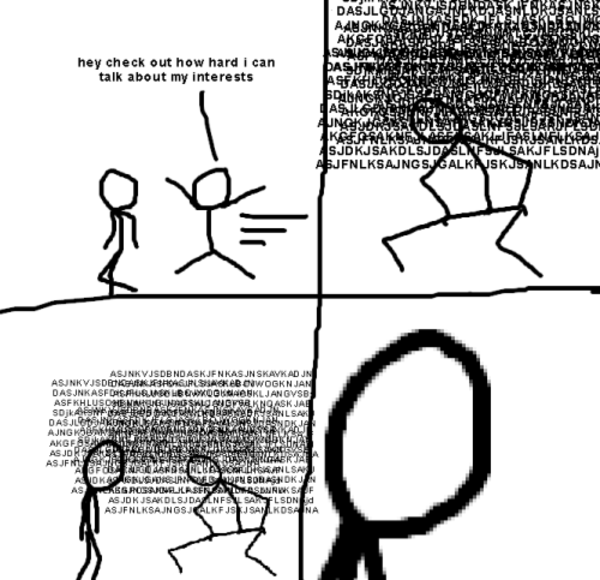 When the differential lock is engaged, both wheels rotate in the same direction. Transfers should be included without effort and crunch. nine0003
When the differential lock is engaged, both wheels rotate in the same direction. Transfers should be included without effort and crunch. nine0003
Engine. It must be free of oil. A serviceable motor starts in 2-3 seconds and works without a metallic rattle, an arbitrary increase and decrease in idle speed.
Bad sign - black oil or with foreign particles. Normally it is transparent.
A malfunction is also indicated by black, white or blue smoke from the exhaust pipe, as well as a burning smell. At idle, the exhaust gases of a serviceable ATV are almost transparent. nine0003
It is advisable to measure the compression in the cylinders - this will require a compression meter with adapters for different threads of the candles and knowledge of the normal compression value in the cylinders of a particular ATV model, taking into account the decompression meter.
Coolant . You need to check with a cold engine. The antifreeze level must be between the minimum mark "LOW" and the maximum "FULL". The liquid should not be cloudy. If there is sediment or dirty “flakes” under the radiator cap, the motor was poorly maintained and may have overheated. nine0003
The liquid should not be cloudy. If there is sediment or dirty “flakes” under the radiator cap, the motor was poorly maintained and may have overheated. nine0003
Air filter . If there are oil stains on it, most likely the ATV turned over.
Electrical . It is necessary to check the operation of the parking lights, high and low beams, turn signals, alarms, horns, heating, winches. Error indicators - for example, an electric booster - should go out when the engine is started.
Electric power steering . With the ATV running and jacked up, turn the steering wheel left, right, then center. With a working electric power steering, the steering wheel does not turn on its own. nine0003
Frame. Cracks, extensive corrosion, welding spots, stripped or fresh paint in the places where the suspension arms are attached, on the arms themselves and on the bottom of the frame - a reason to refuse to buy. Cracks or welding in the cargo platform area are not critical.
The difference in one or more bolts of the engine, variator or bridge, as well as traces of sealant on the crankcase connectors, indicates that the assembly was disassembled to fix the breakdown.
ATV in good working order does not pull to one side. When moving back and forth with the wheels fully inverted, there is no cod. The start of movement and acceleration without jerks and bumps. When you turn on the four-wheel drive and differential lock, it becomes more difficult to turn the steering wheel. nine0003
From time to time the quad is acting up and not behaving as you would like. Nothing beautiful lasts forever, right?
One of the most common faults you may encounter is the ATV suddenly pulling to the left or right.
If you are lucky, your problem may have a simple solution)
Let's take a look at some of the most common causes of ATV pulling to the side, and of course, here we'll cover how to get rid of these problems.
The most common problem that causes the ATV to pull to one side is the difference in rolling resistance due to different tire pressures. Also, the problem may be associated with natural wear or damage to various components of the chassis of the ATV and, as a result, a violation of the angle of the wheels. nine0003
So how do you determine what is causing problems when riding an ATV?
As you probably already understood, there can be several reasons.
To understand why an ATV wants to pull off the road and dive into a ditch when you really don't want to, you need to do a number of checks.
Although I don't have exact statistics to tell you which malfunction occurs most often, I still recommend that you start with what is easiest to check and fix before spending time and money on more unusual and potentially more complex searches. nine0003
In my experience, the most common cause, and by far the easiest problem to check and fix, is uneven ATV tire pressures.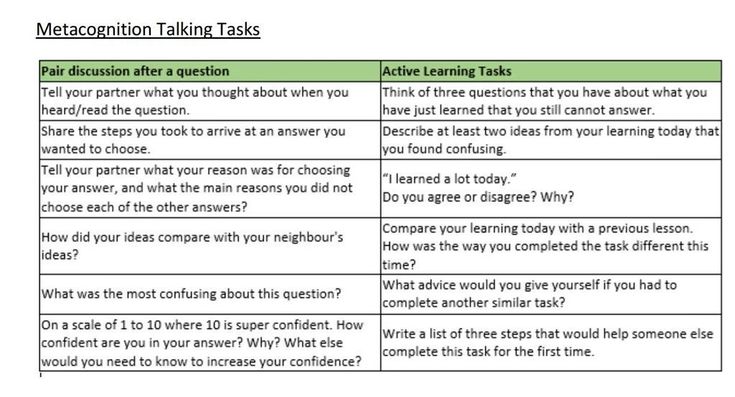
Let's look at what happens when ATV tires have different pressures.
A flat tire has a larger area of contact with the road surface than a normally inflated wheel, as a result of which the friction force, and hence the rolling resistance force, applied to such a wheel will be higher. The wheel will roll more slowly. The opposite wheel will run ahead and try to turn the ATV around the slow wheel. That is, if the ATV pulls, for example, to the left side, most likely, the fact is that the left wheel is lowered. nine0003
To solve this problem, you need to equalize the air pressure in the ATV tires. It is best to refer to the operating instructions, which must indicate the required air pressure in the wheels recommended by the manufacturer. The pressure in the wheels installed on the same axle of the ATV must be the same.
At the same time, you should be aware that due to the design features and weight distribution of the ATV, the tire pressure on the front and rear axles may differ. nine0003
nine0003
Check with a good tire pressure sensor.
Most manufacturers complete ATVs with a set of tools and a sensor for checking air pressure in wheels, such as ATV Yacota SELA 200 , Yacota SELA 150 , Yacota Cabo 200 , Yacota Cabo , MOTAX 200 , MOTAX GRIZLIK and MOTAX RAPTOR .
ATVs MOTAX and YACOTA have these sensors in the standard tool kit. If there is no such device in your kit, I recommend that you definitely purchase it. A very slight difference in air pressure in the tires may well be the reason that the ATV pulls to the side when driving in a straight line.
The air pressure should be checked in both the front and rear tires. True, uneven pressure in the rear tires, most likely, will not be the reason for the withdrawal of the ATV from a straight path. Different pressure in the rear tires can provoke another malfunction - premature wear of the rear differential, due to the increased load on it. But this is a story for a separate review. nine0003
Different pressure in the rear tires can provoke another malfunction - premature wear of the rear differential, due to the increased load on it. But this is a story for a separate review. nine0003
I always keep this inexpensive instrument in my tool kit, its accuracy is good enough to use.
Also make sure that the maximum tire pressure is not exceeded.
ATV wheels can wear differently over time, resulting in the diameter of one wheel being different from the diameter of another wheel. This can also cause the ATV to pull to the side.
To check if the front wheel diameters are the same, you can do a simple check: place the ATV on a level surface and use chalk to make a mark on the sidewall of each front tire at the lowest point. nine0003
Wheels must be pointing straight ahead, gear lever in neutral position. Roll the ATV forward until one of the wheels has made two or three revolutions and the mark you just made is back to the very bottom, to its original position. Look at the mark on the opposite tire. Ideally, it should also be at the very bottom. If this is not the case, the wheel circumferences do not match.
Look at the mark on the opposite tire. Ideally, it should also be at the very bottom. If this is not the case, the wheel circumferences do not match.
If the reason for the ATV pulling to the side lies in the difference in wheel circumference, then when driving to the right, the right tire should have a smaller circumference, and when driving to the left, the left one. nine0003
The circumference of the wheels can differ not only due to uneven wear, but also due to the difference in air pressure in the tires.
The wheel is like a balloon, the higher the pressure, the larger its diameter and vice versa.
For this operation, you need to lift the ATV, place it steadily on the supports so that all the wheels are in a suspended state.
It is very convenient to use a motorcycle stand to lift the ATV. If you do not have them yet, and you plan to service the ATV yourself, I recommend purchasing them. They are relatively inexpensive. Tackles will greatly simplify the ATV maintenance process. nine0003
They are relatively inexpensive. Tackles will greatly simplify the ATV maintenance process. nine0003
Check that there is no excessive play in the ATV suspension and steering joints. Start with the tie rods and steering rack. This operation is more convenient to carry out with an assistant. Have an assistant move the ATV handlebars to the right and left, often and with a small range of motion. And you, in turn, keep your hand on the swivel, which are subject to verification. Check the steering tips and tie rods one by one. You will feel the excess play in the hinge with your hand. If the ATV steering wheel has excessive play, but the tie rod and steering tip are in order, then the steering rack itself or the steering shaft bushing may have play, which can also be checked by hand. The steering column bushing usually wears out over time. The same goes for the ball joints on the tie rods. nine0003
Tighten any loose bolts and replace worn parts. Worn parts can break soon, so replacing them won't be a waste of money, even if their wear isn't the reason your ATV pulls to the side.
In addition, the wheel bearings must be checked for excessive play.
To do this, have a helper grab the top and bottom of the wheel and shake it while you check for play in the ball joints and wheel bearings. nine0003
Check how easy the wheels turn. The wheels should rotate freely, without noise and crackling. The presence of noise indicates wear on the hub bearing. And the tight running of the wheel is about bearing wear or souring of the brake pads. As we said, if one of the ATV's wheels is spinning at a slower speed than the other wheel, the ATV will pull towards the slow wheel.
If necessary, replace the bearings and service the front brake calipers. Sometimes the caliper is easy enough to clean, and sometimes you can’t do without replacing the brake cylinders or the caliper bracket itself. nine0057 Finish with suspension lubrication. Chassis of ATVs brands YACOTA , MOTAX , AVANTIS is equipped with special grease fittings through which you can easily lubricate the desired suspension unit.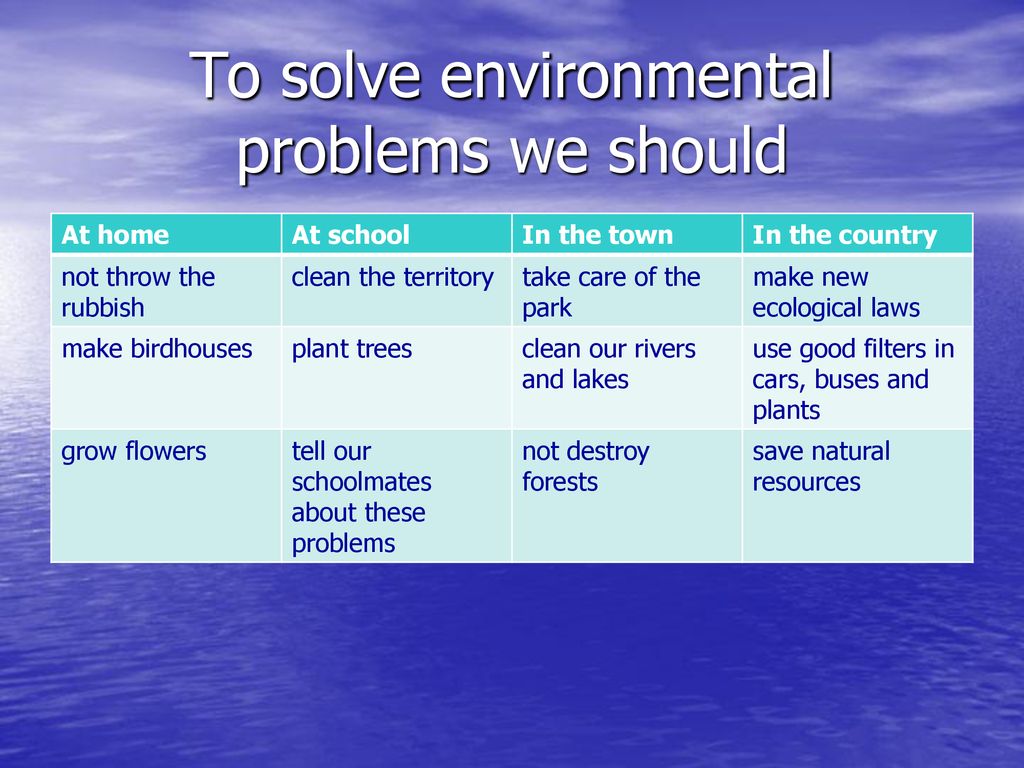 We have already told, in one of the reviews, using the example of a gasoline 125 cc ATV MOTAX T-REX , about the features of maintenance of the ATV suspension. Regular maintenance of your ATV will definitely prolong its life. nine0003
We have already told, in one of the reviews, using the example of a gasoline 125 cc ATV MOTAX T-REX , about the features of maintenance of the ATV suspension. Regular maintenance of your ATV will definitely prolong its life. nine0003
Control check three: checking the running gear for geometry violations.
If you use the ATV for active riding or sports, then it is possible that you have bent some part of the suspension on the next jump. ATV front suspension A-arms are especially prone to damage if you hit a stump or rock while riding. "Fast-growing" trees suddenly appearing in front of the ATV as you drive, a common story!)
A-arms are designed to absorb heavy suspension shocks and, through their integrity, retain more expensive and hard-to-find ATV parts that are more difficult, more expensive or even impossible to repair, for example, an ATV frame. It is not always easy to see if the suspension arm is bent or not. It happens that the levers do not have a symmetrical shape, because the ATV suspension was originally designed this way by the manufacturer.